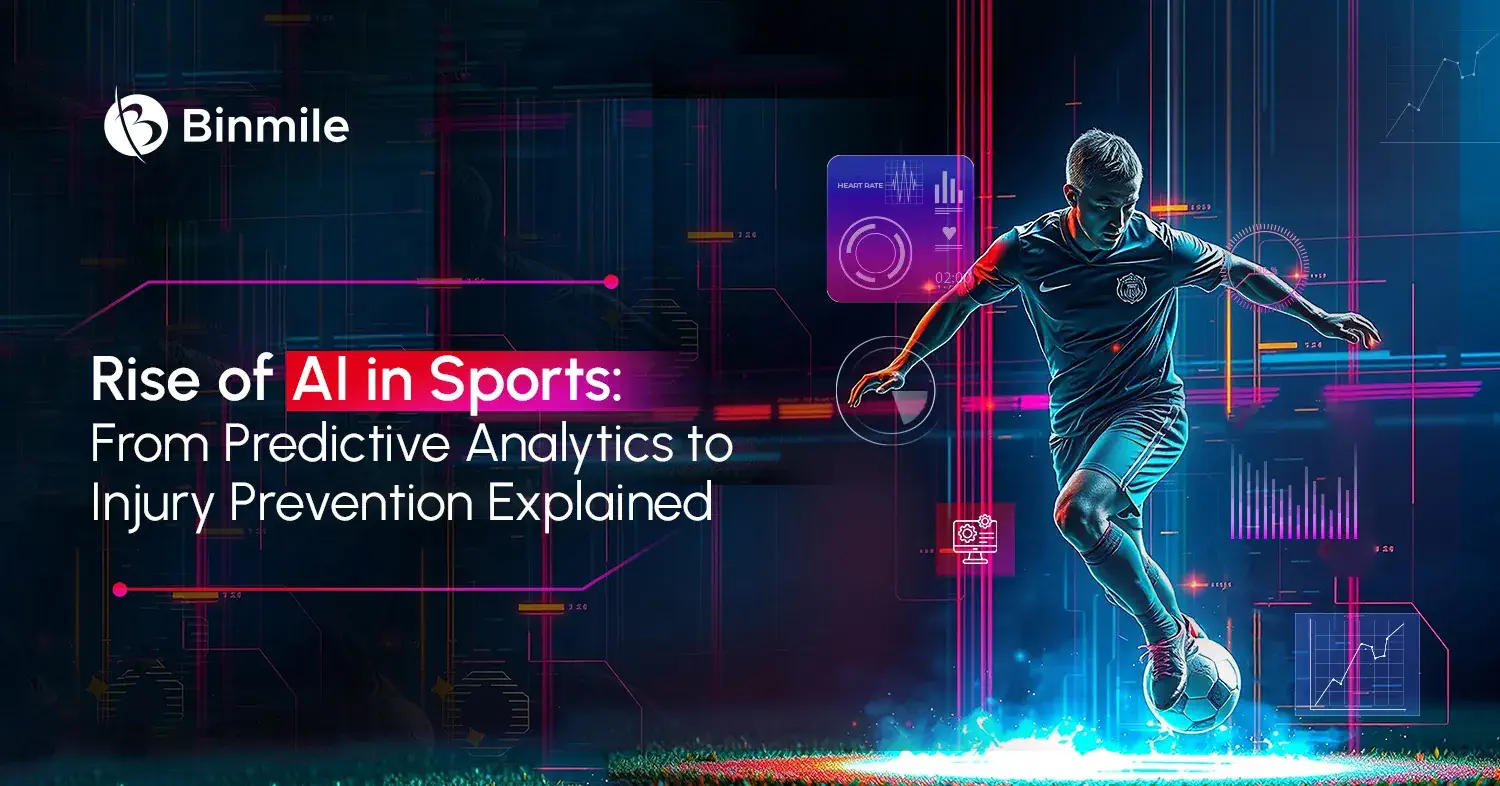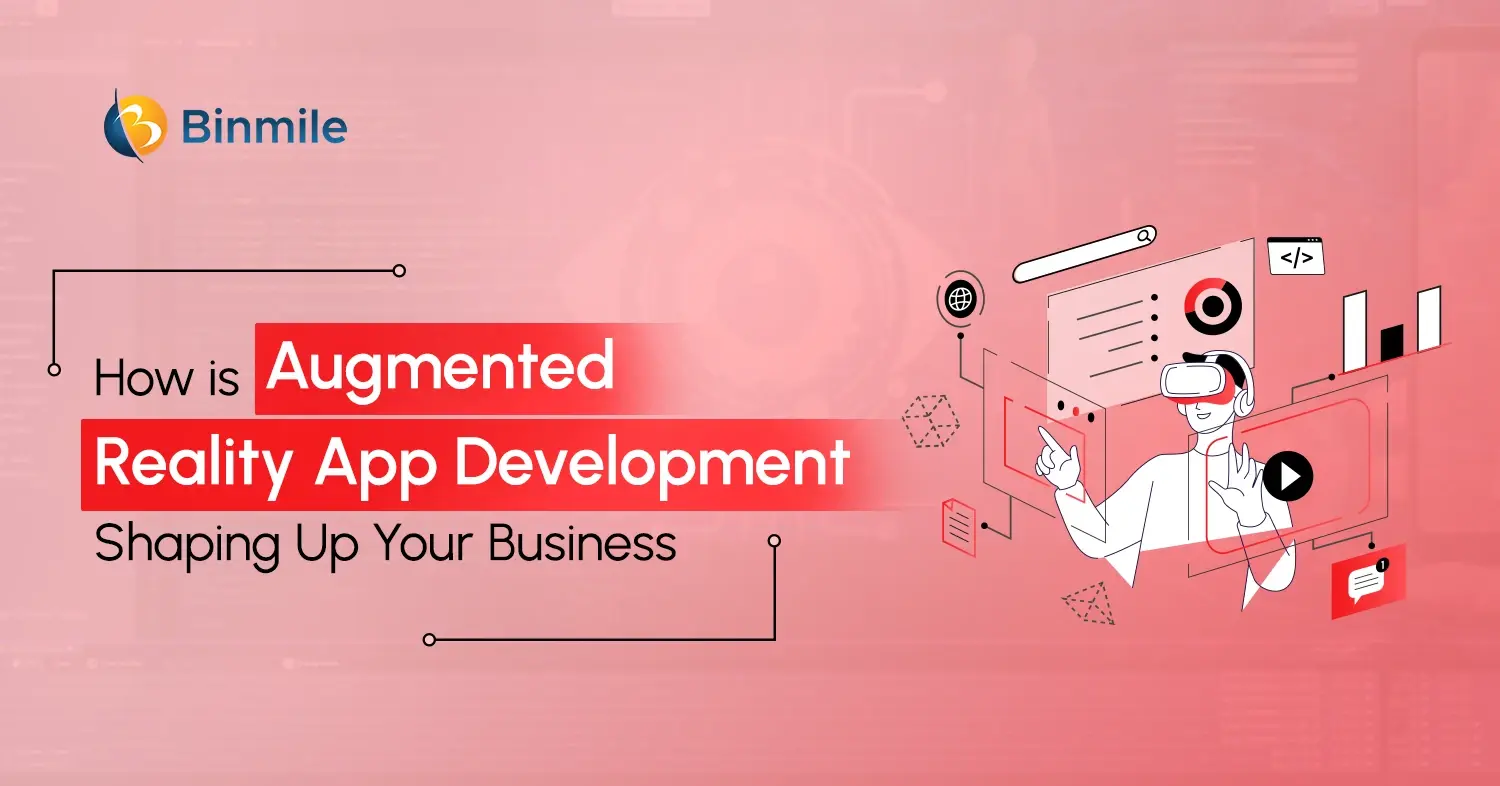Artificial intelligence technology is revolutionizing the world of sports, redefining how sports are played, viewed, and consumed. AI in sports is bringing a new way of transformation to the game from the way athletes train, teams strategize, and fans engage with their favorite games. However, understanding how AI and sports synergy work and its impact on sports can be as complex as trying to dribble past five defenders- possible, but not easy. It is estimated that leveraging AI solutions in the sports market will grow from $1.85 billion in 2023 to $6.59 billion in 2028.
Thus, the implications for the sports industry are substantial, so where to start? How can you also leverage AI technology to tailor sports viewing and playing experiences, improve content performance, and foster deeper connections with fans? In this blog, we will explore the exciting applications of AI in sports, diving into how predictive analytics are reshaping game strategies and how cutting-edge technologies are being used to prevent injuries and optimize player performance. We will examine the current landscape and look ahead to the future of AI in athletics, uncovering how this technology is changing the game for players, coaches, and spectators alike.
6 Ways AI in Sports is Transforming the Sports Industry
AI and sports have come a long way. It started with Hawk-Eye computer vision tracking in tennis, back in the 2000s. Today, sports teams and organizations are leveraging data to make informed decisions, thanks to AI models and algorithms providing real-time insights. The technology is equipped to analyze data from various sources, including video feeds, wearables, and social media, to help organizations enhance player performance, drive fan engagement, and increase revenue. Here are a few ways AI is being used in sports:
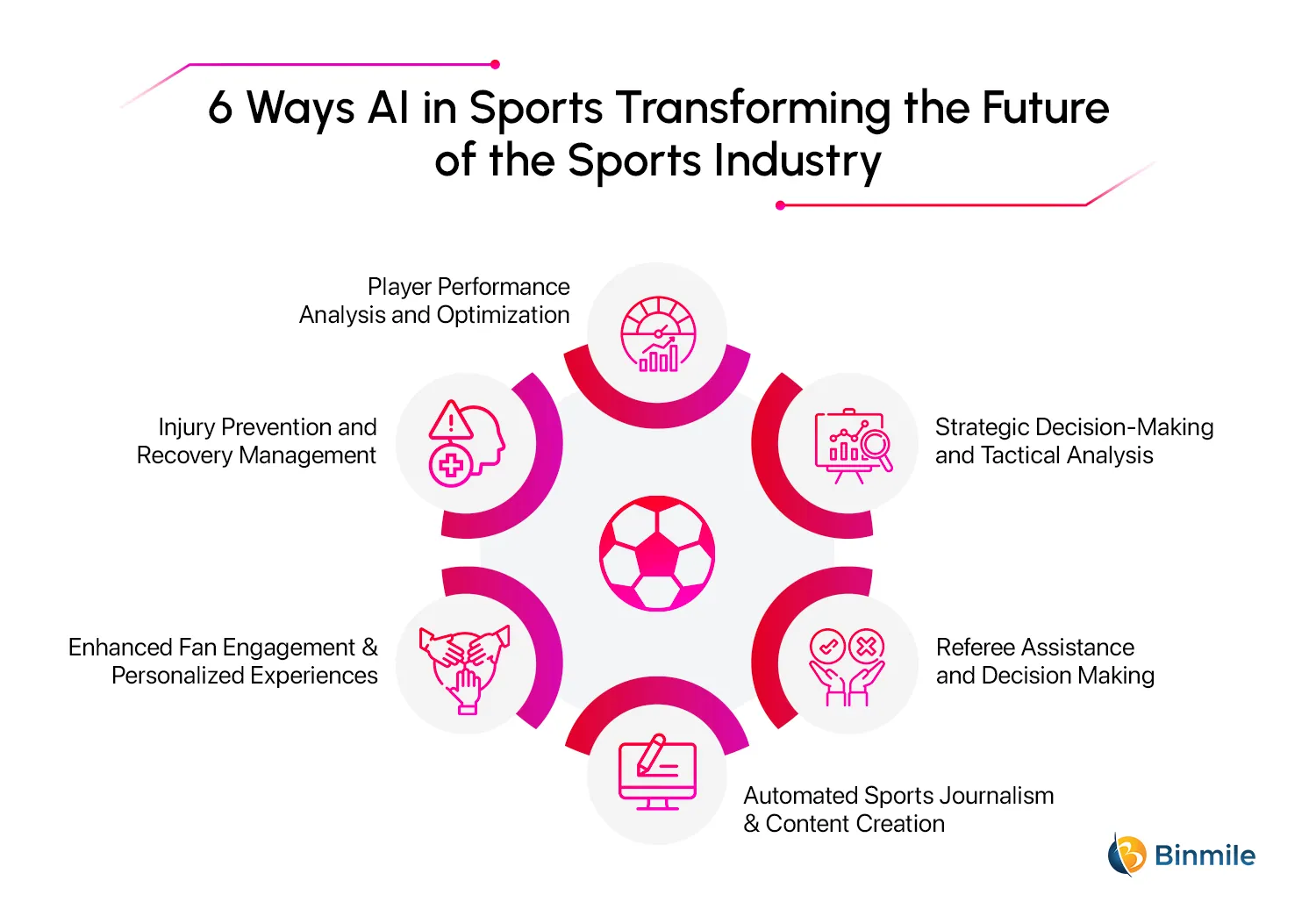
#1 Player Performance Analysis and Optimization
AI systems analyze vast amounts of data from wearable sensors, video footage, and historical statistics to provide deep insights into player performance. For example, the NBA uses Second Spectrum’s AI-powered tracking system to capture and analyze every movement of players and the ball during games. This data is used to assess player efficiency, team strategies, and even predict future performance.
#2 Injury Prevention and Recovery Management
With its capabilities to process data from various sources, including player fitness levels, workload, sleep patterns, and biomechanical information, AI models can predict injury risks. The NFL, for example, employs Sparta Science’s AI platform to assess players’ movement patterns and identify potential injury risks. These systems can alert coaching staff to reduce a player’s training load or recommend specific exercises to address weaknesses.
In rehabilitation, AI helps create personalized recovery plans by analyzing a player’s progress and comparing it to historical data from similar injuries.
#3 Enhanced Fan Engagement & Personalized Experiences
There is no doubt that AI in sports has changed the way we watch sports and is also revolutionizing our interaction with sports content. Utilizing generative AI, the technology can create personalized game highlights for each user based on their preferences and viewing history. During live games, AI-generated graphics and statistics enhance the viewing experience, providing real-time insights that were previously unavailable. Imagine getting instant responses to your fan queries about stats, schedules, or ticket information. That is now possible with AI.
#4 Automated Sports Journalism & Content Creation
Even the media is not untouched by artificial intelligence, with the feature of automating the creation of match reports, news articles, and even video highlights. Leveraging advanced systems, sports channels, or organizations can even create video highlight reels automatically by analyzing game footage and identifying key moments based on factors like crowd noise, player movements, and statistical significance. This technology enables media outlets to produce more content faster, catering to the ever-increasing demand for sports coverage.
For instance, since 2023, The Washington Post has been leveraging Heliograf, an AI-powered system that generates short, factual news stories, particularly for minor league baseball games.
#5 Referee Assistance and Decision Making
AI is playing an increasingly important role in officiating sports events. With little human intervention, the technology is acting as line judges in major tournaments, reducing errors and controversies. Similar systems are being developed and implemented across various sports, from basketball to cricket, to assist referees in making more accurate decisions and maintain the integrity of competitions.
We have seen FIFA, an international football organization, implementing AI-assisted offside technology that uses computer vision and machine learning to make precise offside calls. This system tracks the positions of players and the ball in real time, alerting officials to offside positions almost instantly.
#6 Strategic Decision-Making and Tactical Analysis
The technology is also assisting and empowering players and their teams in strategy and tactics in sports. From analyzing vast data on opponents and players to evaluating historical performance to inform coaching decisions and in-game adjustments, AI and sports are creating a lot of buzz. With the early and successful adoption of technology, AI in sports is becoming prevalent across all levels of sports, from professional leagues to high school teams, as it becomes more accessible and sophisticated.
For example, in baseball, the Houston Astros use AI to process live game data and suggest optimal pitching strategies and batting lineups.
Want to see how our AI-powered solutions empower you to achieve excellence and gain a competitive edge?

Rise of AI in Sports: Applications, Use Cases & Future Trends

So far, we have seen how artificial technology is transforming every aspect of sports, from the competition and gameplay to the show and entertainment business. Moreover, AI-based models and algorithms are widely utilized across major sports categories. American football, soccer, tennis, cricket, and even in the recently concluded Olympics 2024! It is practically everywhere!
If you are also wondering how AI is used in Sports? It is quite simple, actually. Though AI algorithms have standard, independent applications, they perform the assigned task when embedded and integrated with other emerging and smart technologies.
AI and Sports: What Comes Next?
The opportunity to build AI-driven sports experiences is happening quite literally with how team management, sports authorities, or even businesses bring radical improvement and scale with familiarity. Responsible AI aims to embed such ethical principles into AI applications and workflows to mitigate risks and negative outcomes associated with the use of AI while maximizing positive outcomes.
Moreover, teams and sports organizers are also experimenting with how to streamline operations and improve the fan experience. To effectively use AI, we recommend that they develop a holistic strategy that includes an understanding of their technology stack, internal skill sets, security measures, and a clear roadmap. Doing so will enable them to utilize the trove of historical data at their disposal, augment their models, and expand the impact of AI in sports, their revenue streams, and fans’ experiences.
AI in Sports: Playing by the Rules with Responsible AI
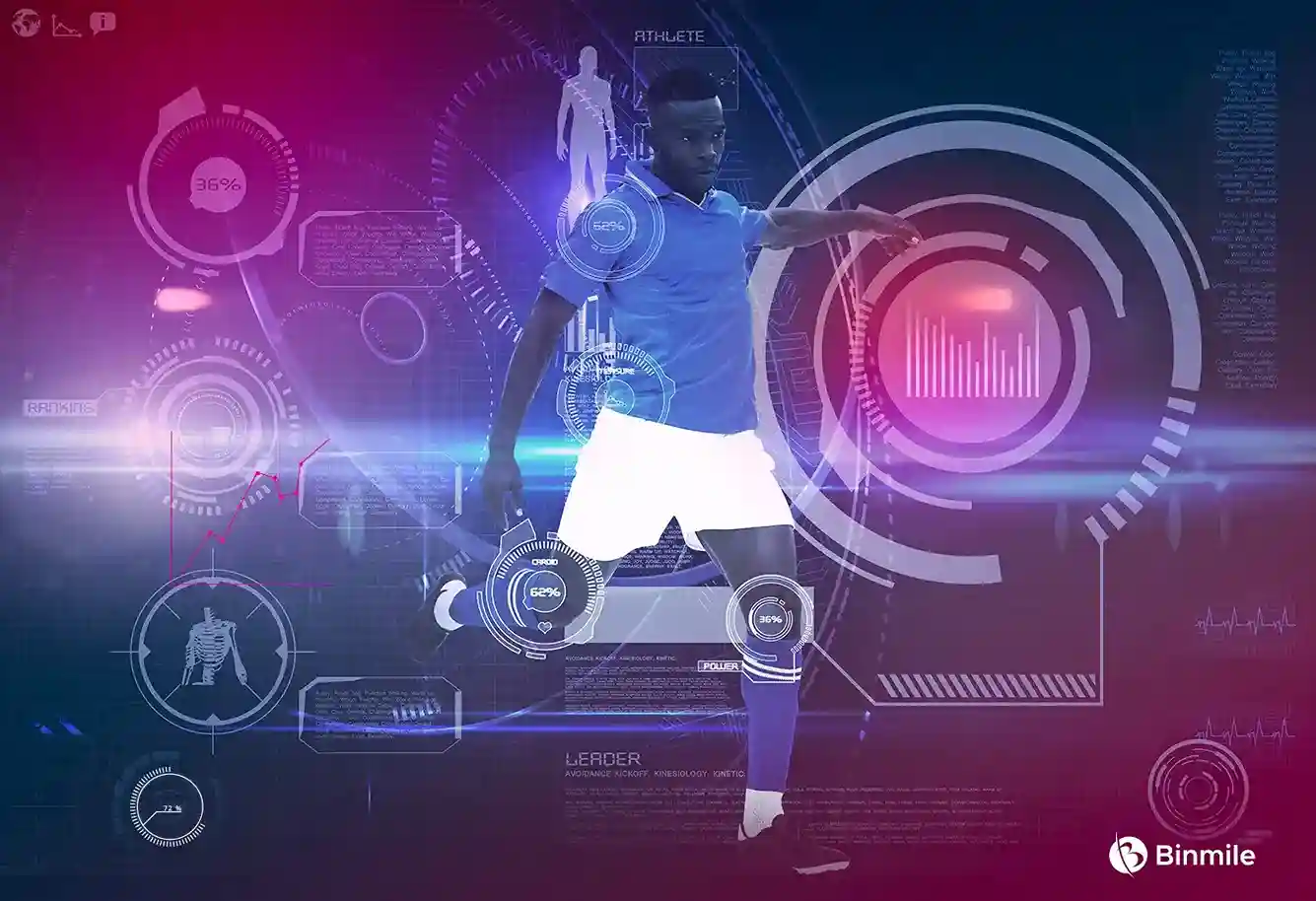
When we discuss responsible AI in general, we are talking about having a guide to building ethical AI Models and implementing AI applications and workflows to mitigate risks and negative outcomes associated with the use of AI, while maximizing positive outcomes. This becomes more crucial for integrating AI in sports to prevent biases, protect athletes’ privacy, and maintain the integrity of competitions. Moreover, sports organizations or business owners must develop AI-focused solutions powered by strong ethics and responsibility to ensure that decisions are made fairly and transparently, avoiding discrimination and promoting equal opportunities.
So, embrace the use of AI applications in sports to safeguard athletes’ data, prevent its misuse, and protect their privacy, and also improve fan experiences. Here is what you should do:
- Evaluate its worth to your organization while also maintaining strong data governance practices.
- Utilize your current governance, cybersecurity, privacy, and compliance programs as you implement responsible AI within your organization.
- Take an organization-wide approach, ensuring that every senior leader comprehends their role and responsibilities in building trust in AI systems.
- Consider the long-term impacts and scalability of AI solutions, ensuring they align with your organization’s strategic goals and can adapt to future needs.
Lead the future of sports with cutting-edge AI technology in your strategy!
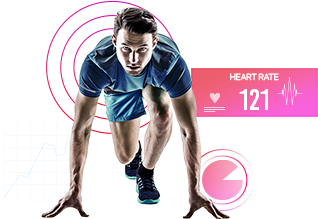
Conclusion
As we have seen, the integration of AI in sports is not just a passing trend but a fundamental shift in how the games we love are played, managed, and experienced. From predictive analytics that give teams a competitive edge to AI-driven injury prevention techniques that keep athletes at the top of their game, artificial intelligence is becoming an indispensable tool in the sports world. While challenges and ethical considerations remain, the potential for AI to enhance athletic performance, improve player safety, and deepen fan engagement is undeniable.
As technology continues to advance, we can expect AI to play an even more significant role in shaping the future of sports, creating a landscape where data-driven decisions and machine learning algorithms work hand in hand with human skill and determination. The rise of AI in sports is not just changing how we play; it is redefining what is possible on and off the field.
